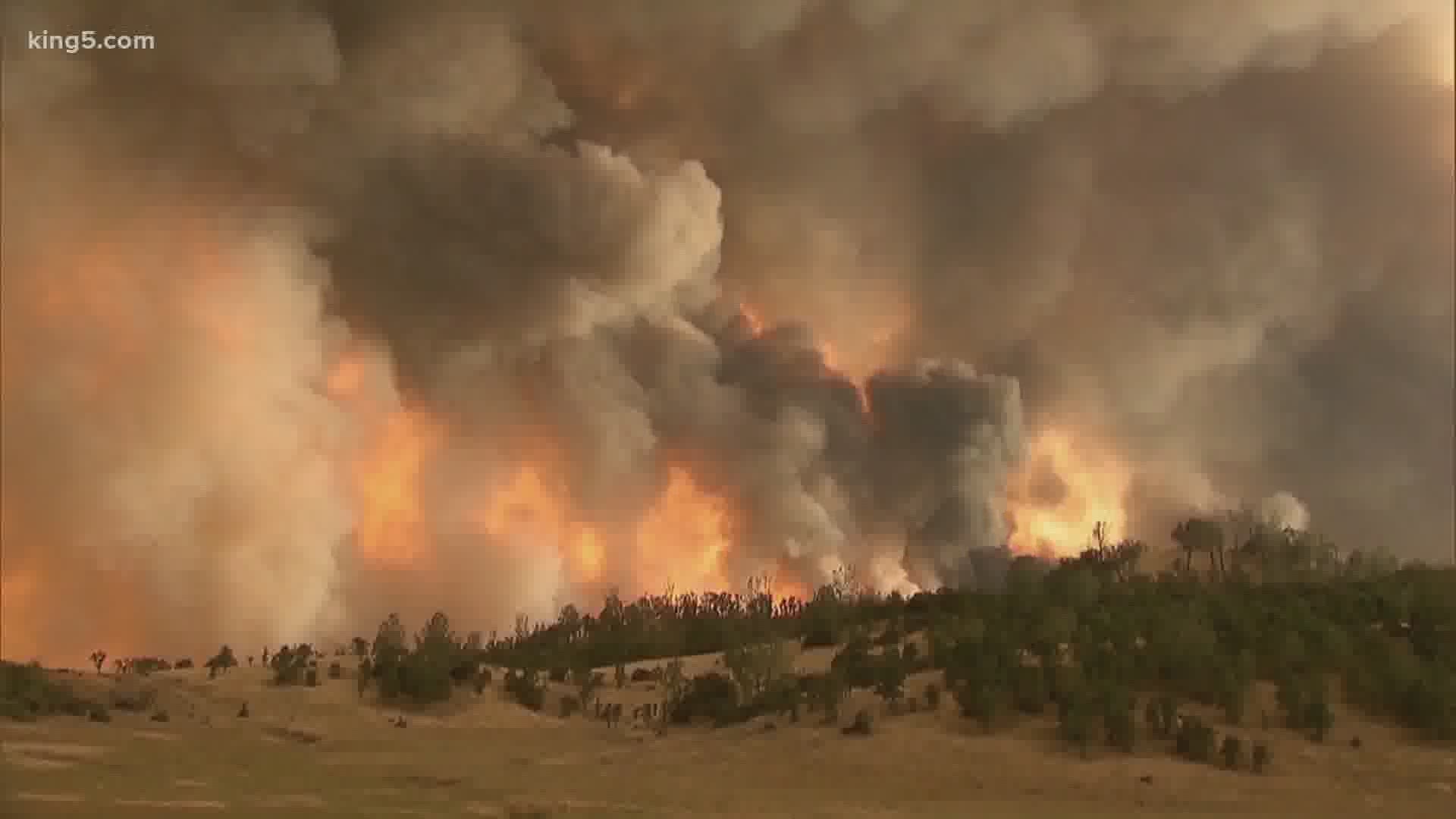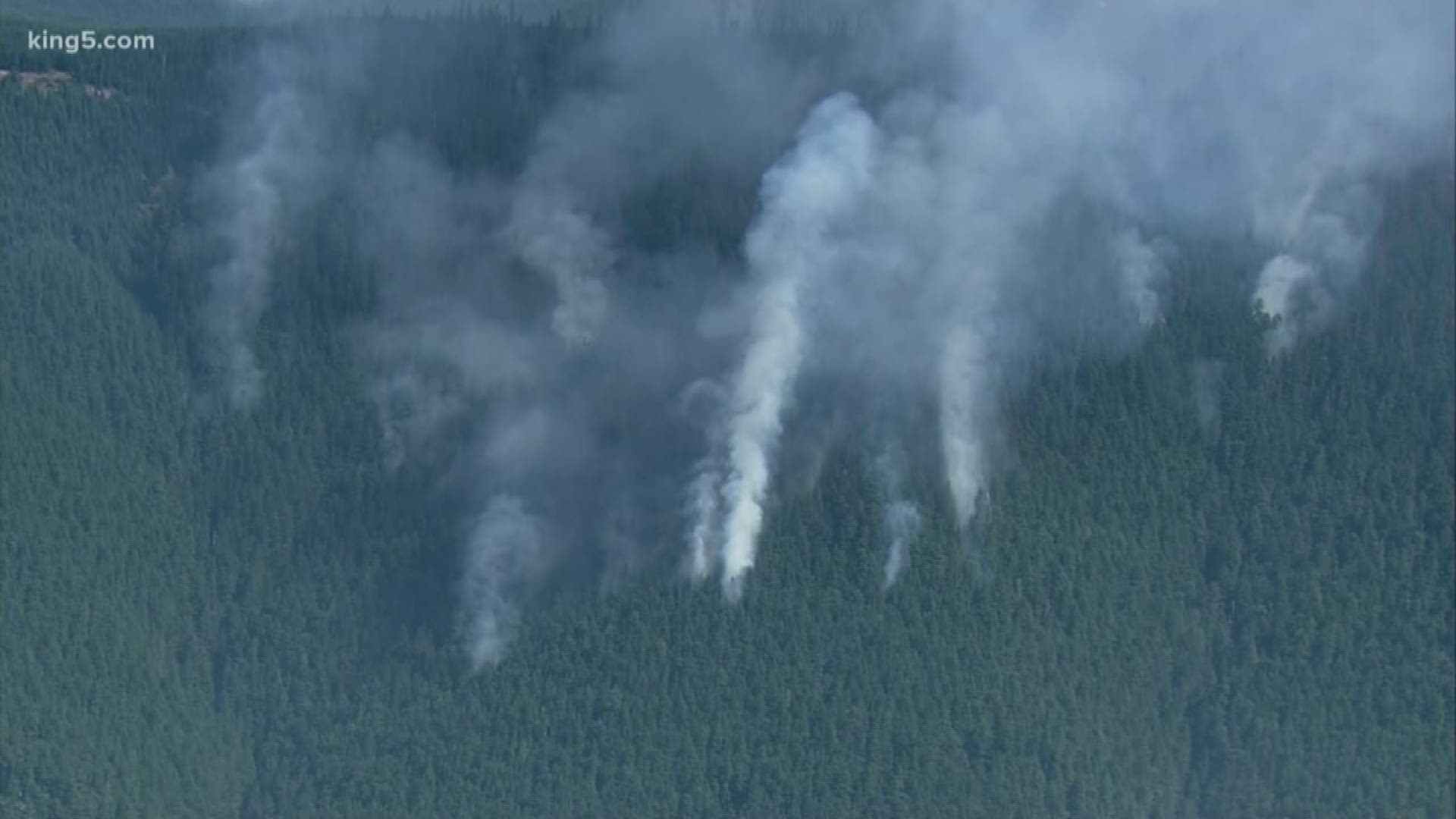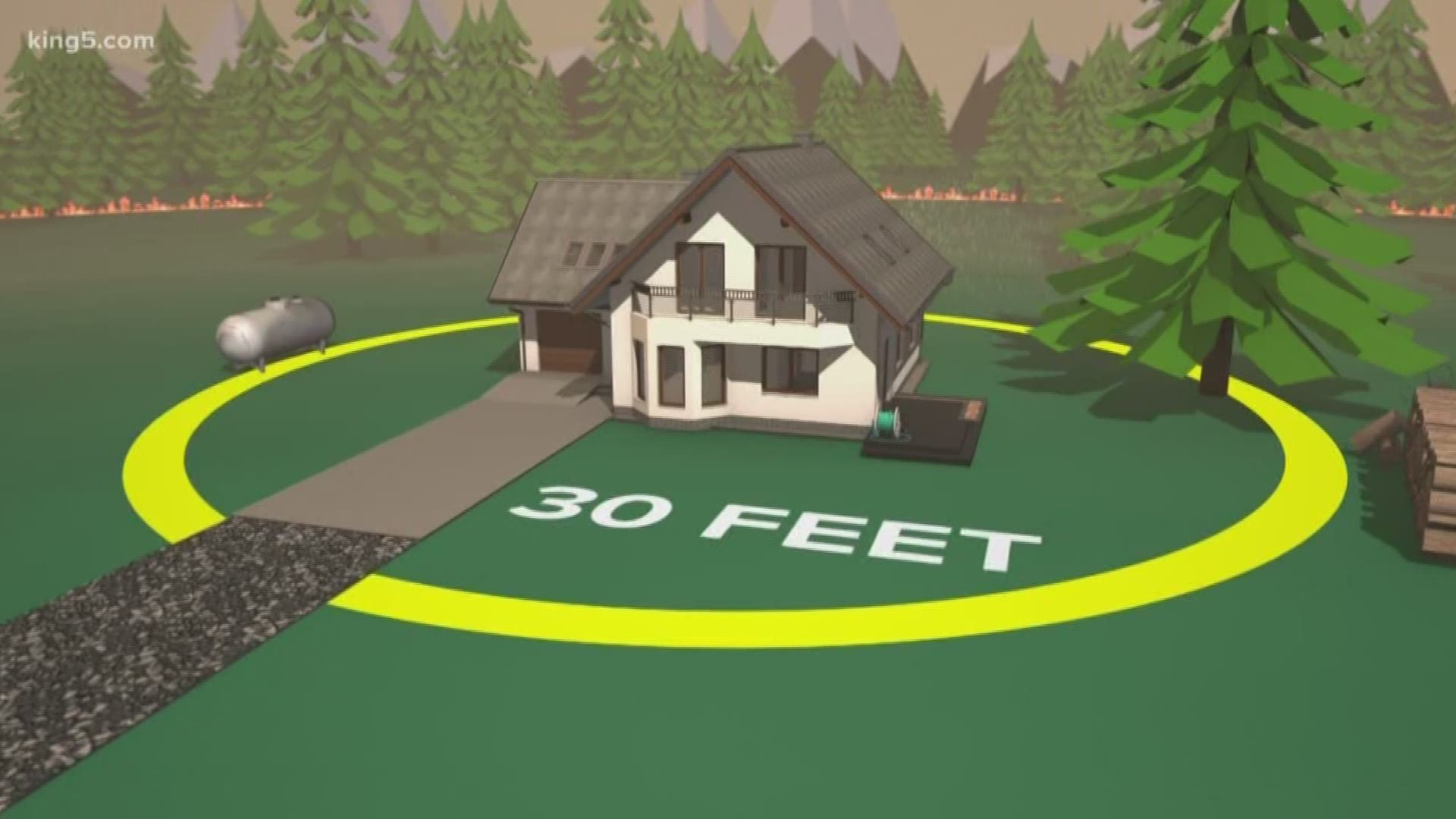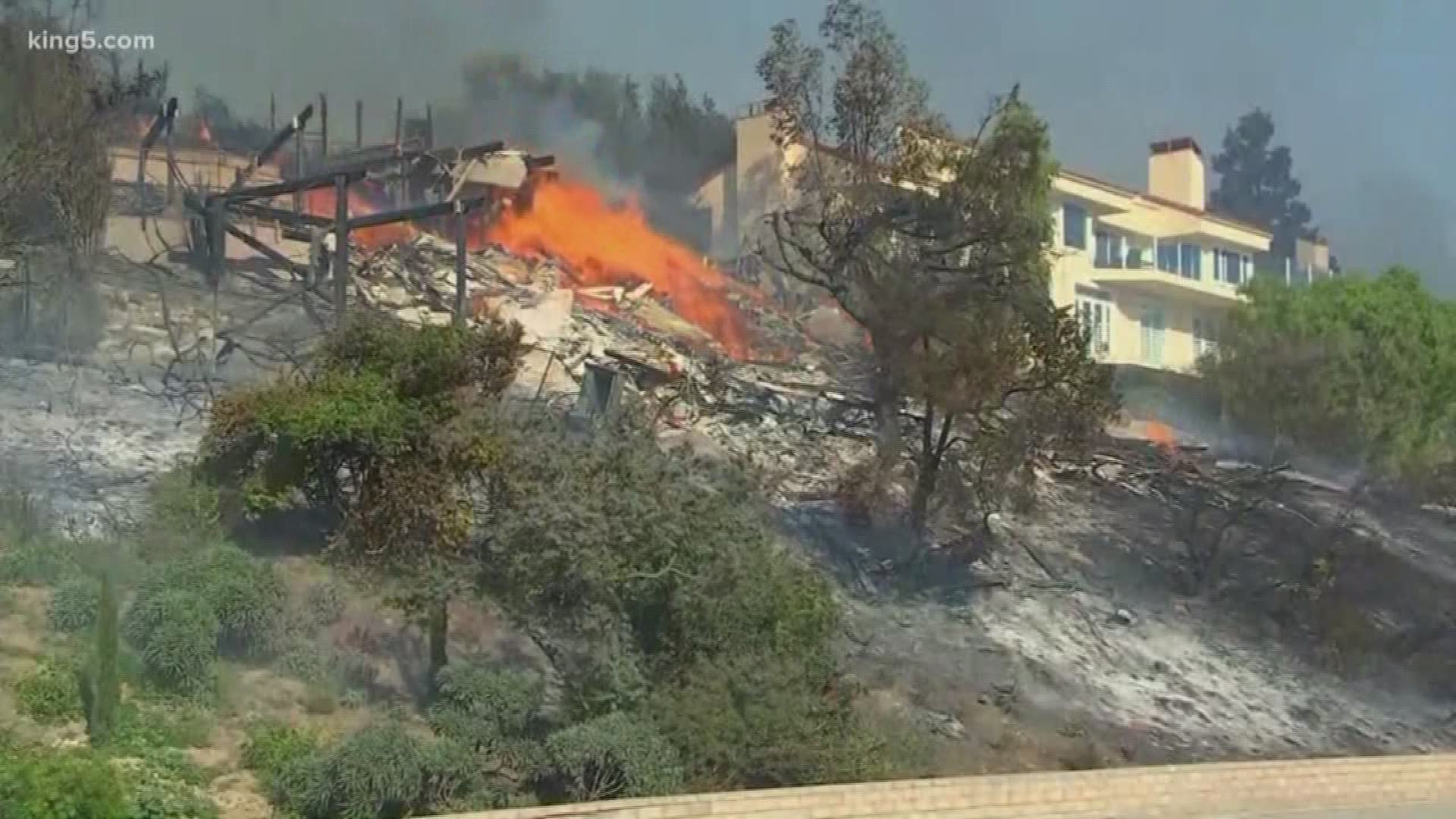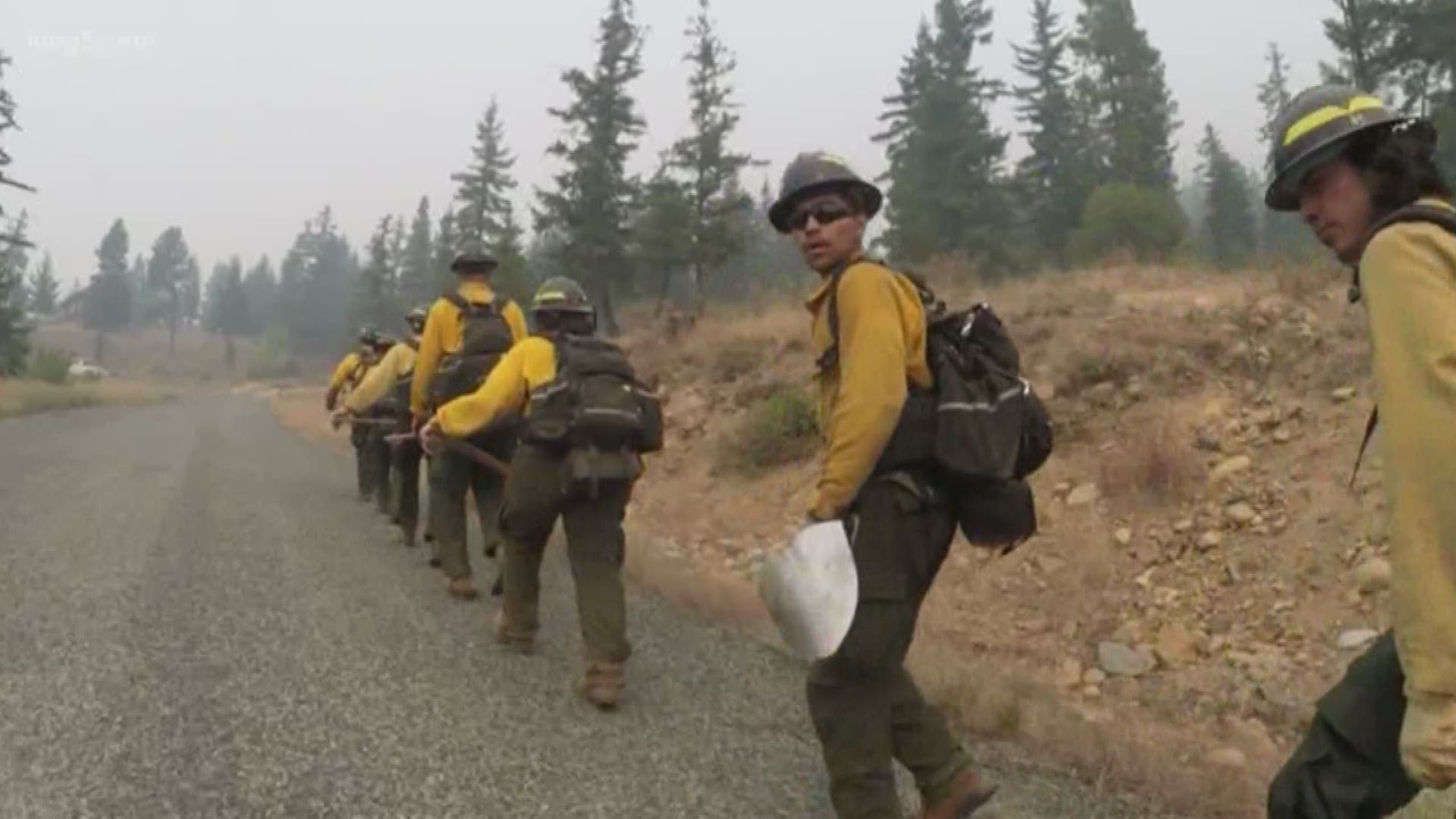Washington state experienced unprecedented fires the week of Labor Day. While the state's wildfire season typically targets central and eastern Washington, a dense part of western Washington was burned in the Sumner Grade Fire in Bonney Lake and Sumner.
At a news conference on Friday, Gov. Jay Inslee said that the roughly 980 square miles burned in Washington in just the last five days amounts to the state’s second worst fire season on record, after 2015.
Inslee said fires across the Pacific Northwest and California shouldn’t be called wildfires, but “climate fires.”
“This is not an act of God,” Inslee said. “This has happened because we have changed the climate of the state of Washington in dramatic ways.”
Inslee ran for the Democratic presidential nomination on a climate platform and said it’s important to fight the fires not just on the ground, but by creating clean-energy jobs and taking other measures to combat climate change.
Scientists have long said that human-caused climate change would result in hotter temperatures and more extreme weather events, such as droughts, that can increase the frequency and intensity of wildfires.
In 2019, KING 5 took an in-depth look at wildfire risks, the effects of climate change and what residents can do to protect themselves.
Fire seasons are getting longer in the west. For western Washington, that means there are more days every season increasing the potential for major fires on this side of the state.
While large fires on the west side of the state are less common than on the east side, the west side has seen huge record setting fires in the past.
In 2019, KING 5 followed fire scientists into the Cascade Mountains near Mount Rainier, where they were studying how the 2017 Norse Peak fire behaved after it spread to the west slopes of the mountains.
The Department of Natural Resources (DNR) and the University of Washington’s Climate Impacts Group are doing research to get a better handle on the impact of climate change, and the unique recipe it takes for big western Washington wildfire to break out. And now in 2020, we are seeing major westside fires take hold.
More western Washington communities are making moves to protect themselves from the risk of wildfire by participating in the national Firewise program.
In 2019, KING 5 visited the large planned community of Trilogy at Redmond Ridge, where residents are implementing Firewise recommendations.
In this story, you can learn some of the basics to protect your home, and how residents who live in an area known as the urban/wildland interface are protecting themselves. Firewise is a voluntary program overseen by the National Fire Protection Association.
Climate Impacts Group reported that by the year 2040, the median annual burned area in the Northwest could more than double what we saw from 1916 to 2006. Climate change could lead to more east wind events, but those events may not be as strong as in the past. The number of “very high” fire danger days on the west side of the state will increase.
It’s all blamed on average air temperature increases of 1.8 degrees, less summer rain, and earlier snowmelt.
The bottom line, according to the Climate Impacts Group, is that forest fuels are drier, the number of fires is increasing, and those results are human-caused. That information is confirmed on the ground as we see more fires, and even bigger fires, in Western Washington.
“We responded to 1,800 fires this year, and 40 percent of those fires were in Western Washington,” said Chuck Turley, Division Manager for Wildfire for the Department of Natural Resources.
Much of the concern for Western Washington is about getting the population educated.
In January 2019, Public Lands Commissioner Hilary Franz has proposed a plan to strengthen the ways that Washington can prevent and respond to wildfires.
Franz released the 10-year plan last week as part of her $55 million budget request to the Legislature to improve the state's firefighting abilities in the face of climate change and more residents moving into fire-prone areas.
The plan would add 30 full-time and 40 seasonal firefighters to the Department of Natural Resources, and add two helicopters to the firefighting fleet.
It would also create a wildland fire-training academy that different agencies could use.

